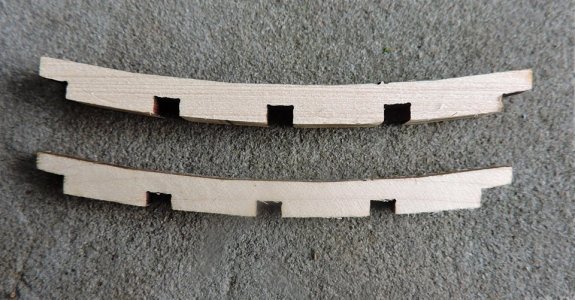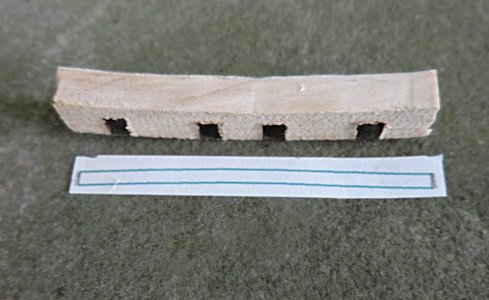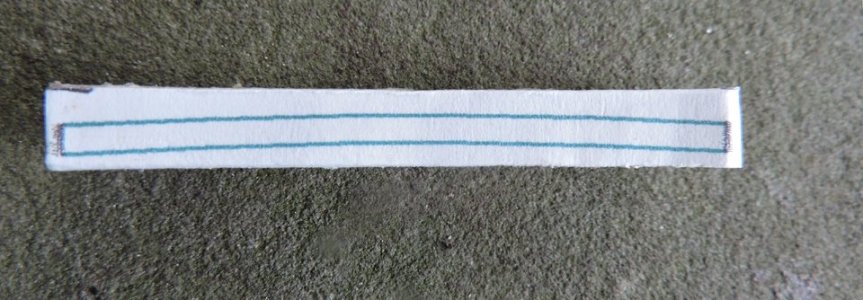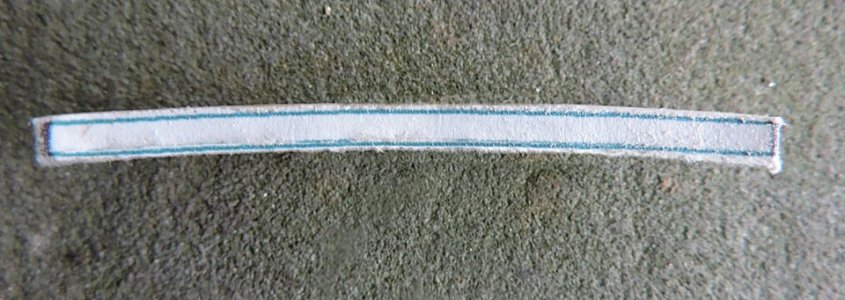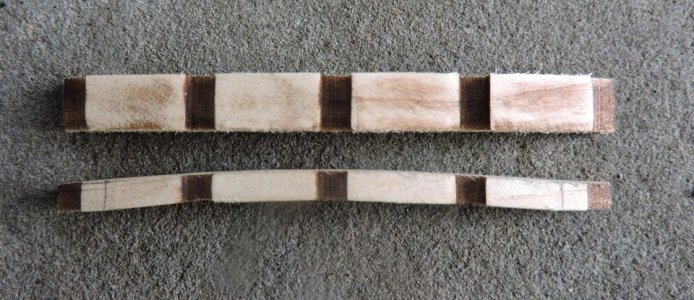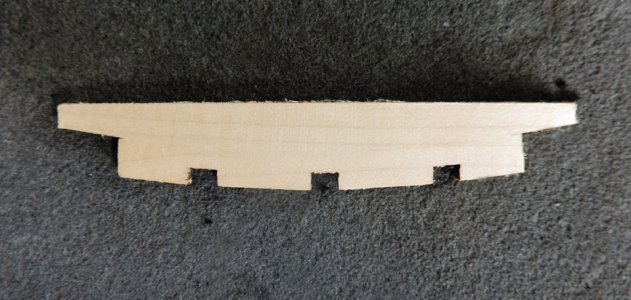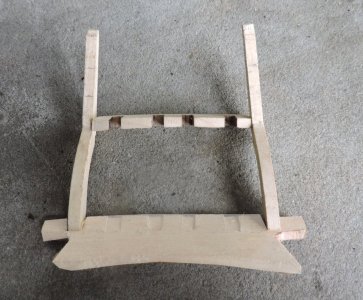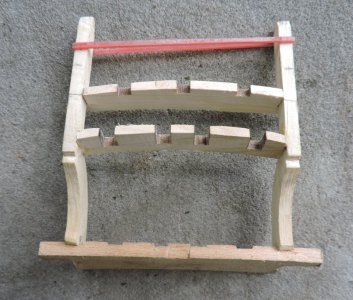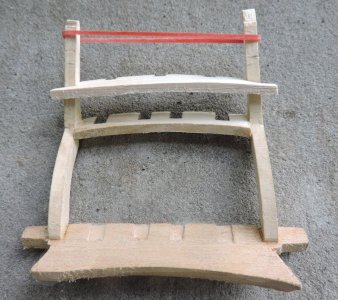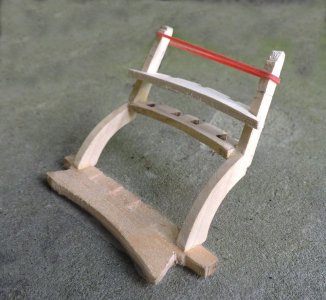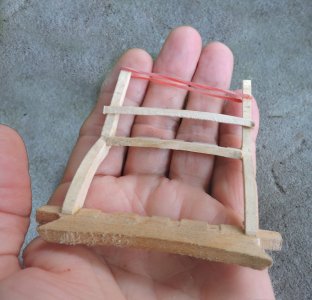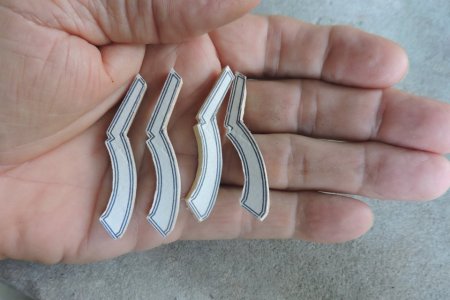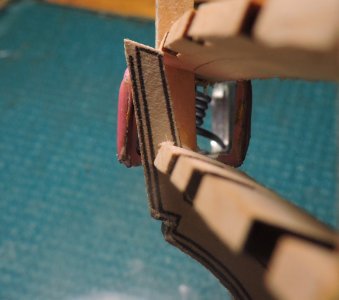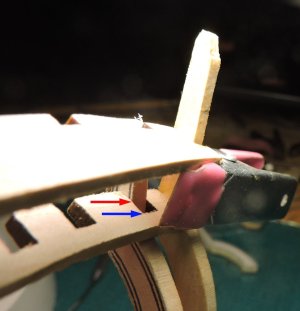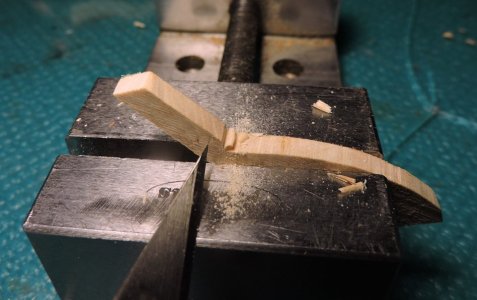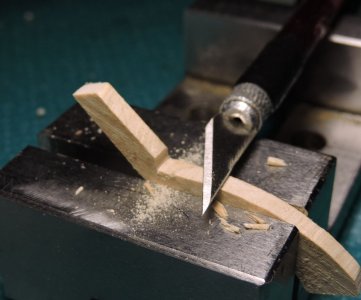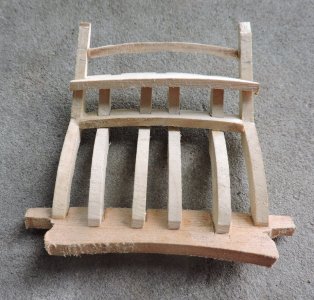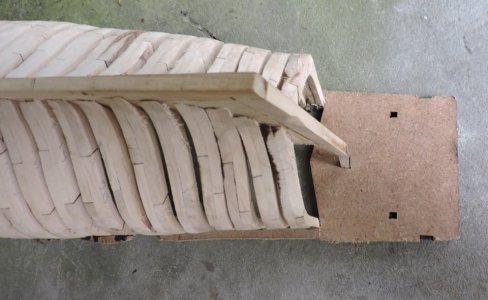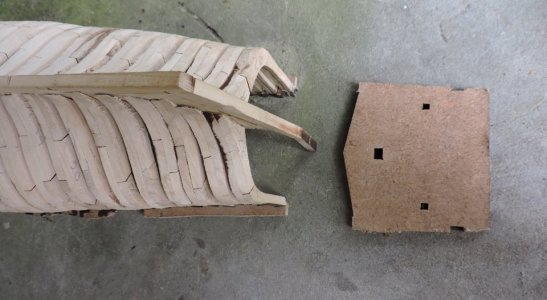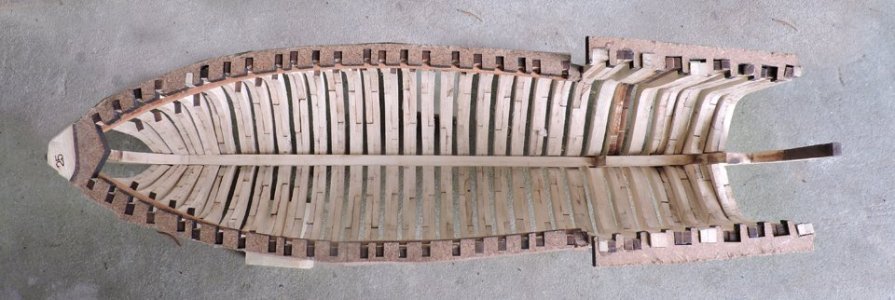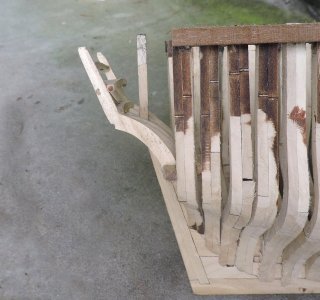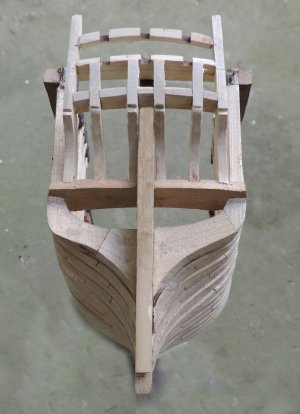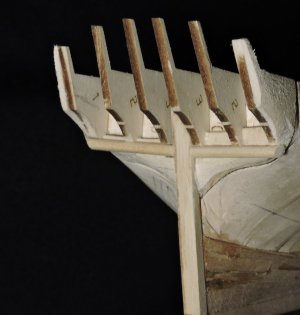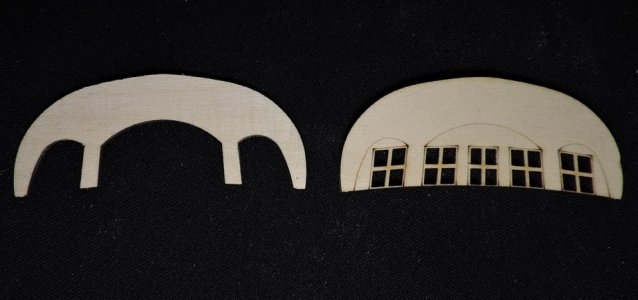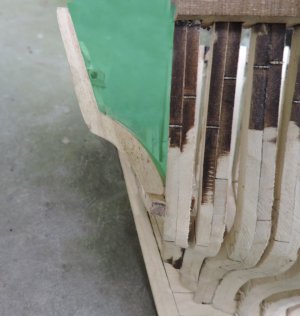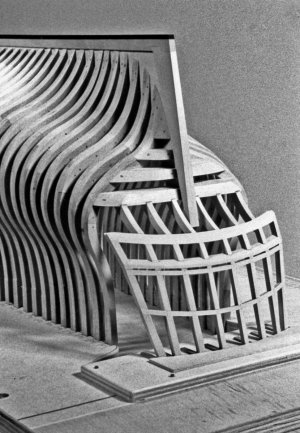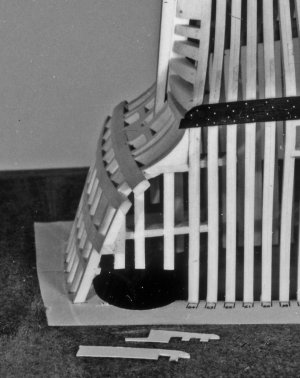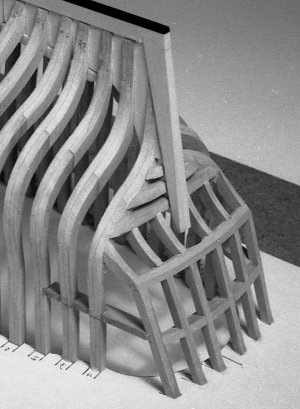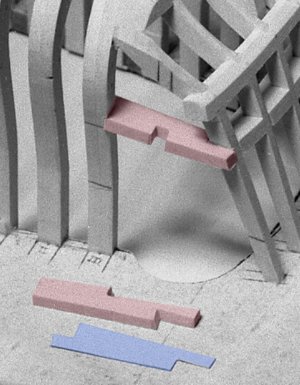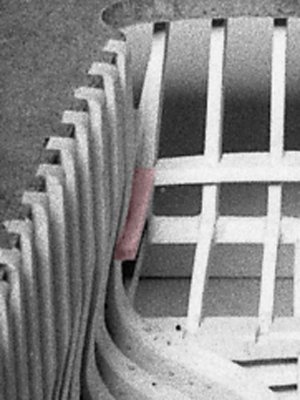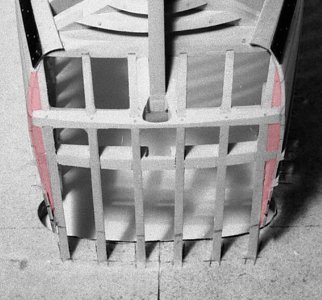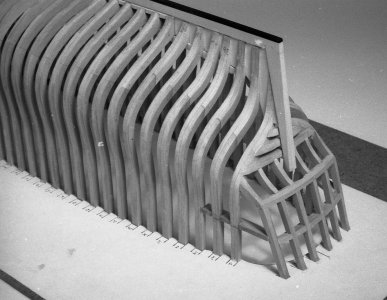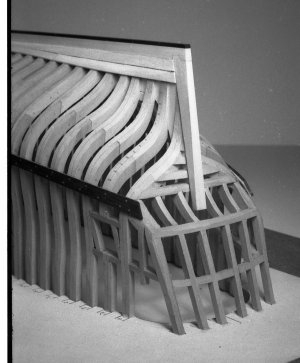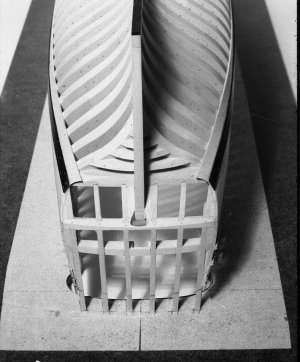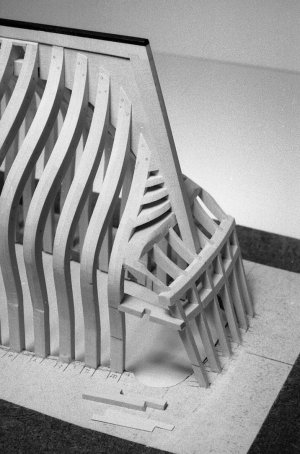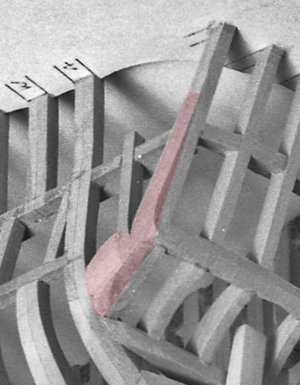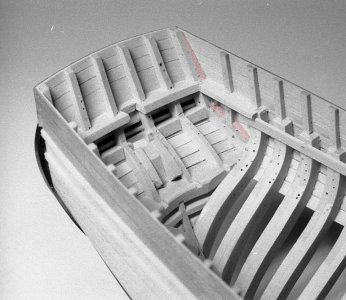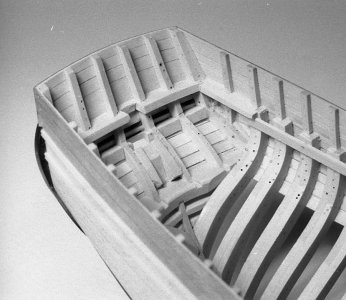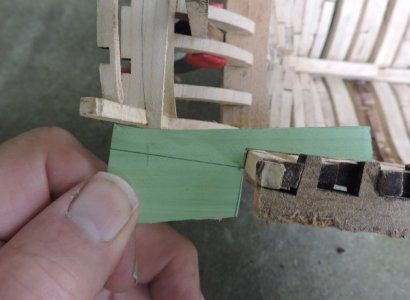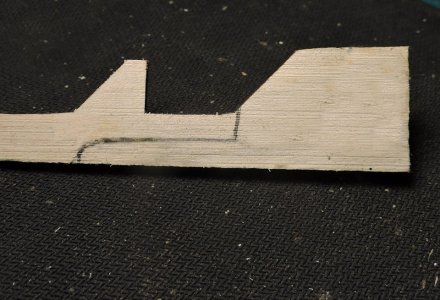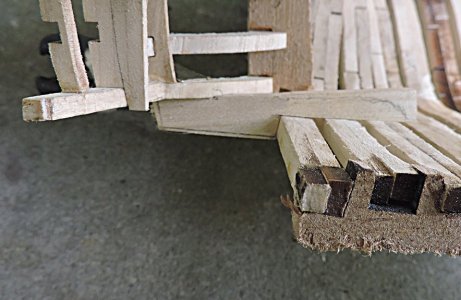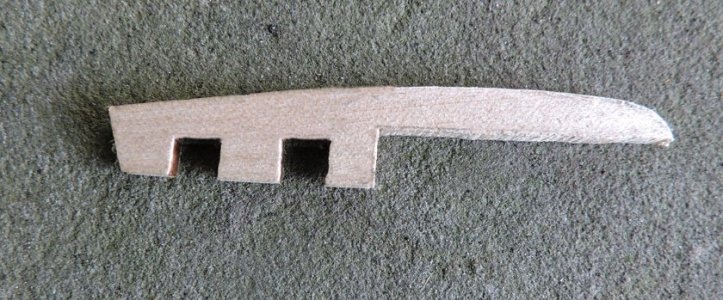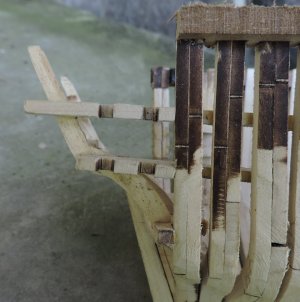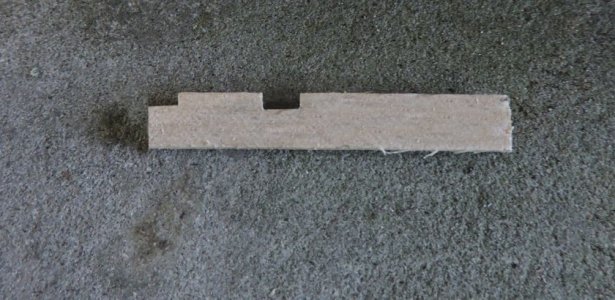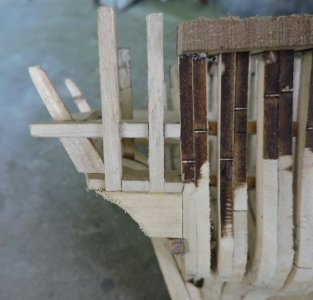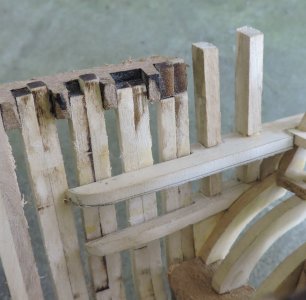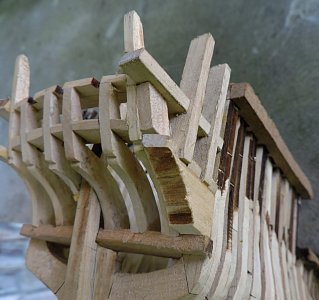- Joined
- Dec 1, 2016
- Messages
- 6,334
- Points
- 728

As a model shipwright you look at something like the stern and see it is built this way and that way by different builders and how they approached the build. The trick is finding your way. I have seen builders start with the stern post set the transom and proceed to build the entire stern. once built they add the fashion timbers and continue building the hull from that point. Personally, i found building the stern as a separate piece off the hull.
first i make a copy of the stern drawing and rubber cemented it to a piece of scrap wood. It is common for all the stern timbers to have a slant towards the center line. In this case only the end timbers slant.
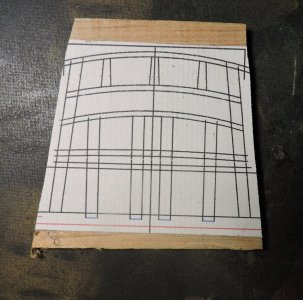
next step is to cut out the end stern timbers and clamp them too the drawing making sure the notch lines up with the molding. The top of the timber is a little long and runs over the cap rail. That will be trimmed later,
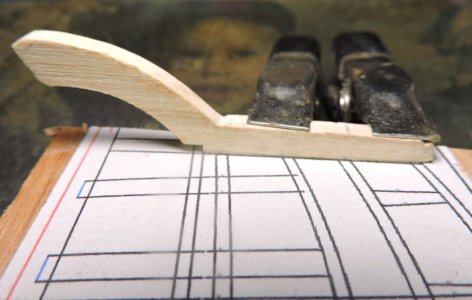
with both the outer timbers clamped to the drawing they are ready to glue to the transom.
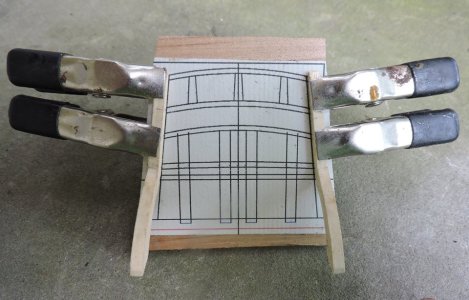
the notches cut into transom were taken off the plan so the timbers will set perfectly into the outer notches automatically setting the slant.
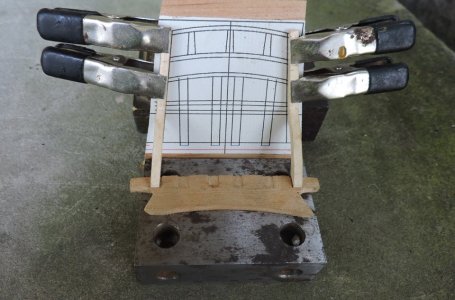
The foot of the timbers are quite small and i would not depend on them to set the backward slant of the stern. So what i did for the slant is to make a template from the plans for my stern plate to rest on held in place by a couple blocks.
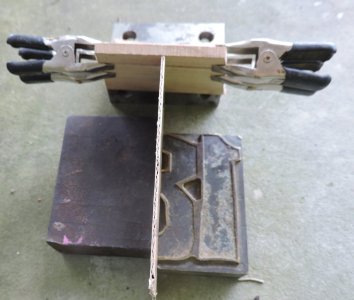
from the side you can see the setup
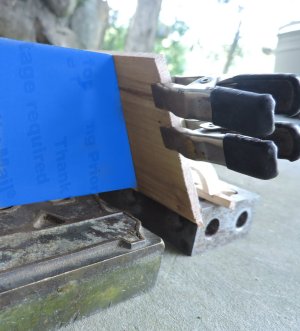
Another view of the setup. I could have trimmed the bottom of the drawing and wood piece to the height of the transom. but what i did was move the block the transom sat on and let the stern fall free so the foot of the timbers sit in the transom notches.
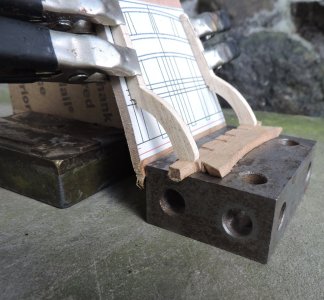
with the outer timbers in place i will run a treenail up from the bottom of the transom and into the timber. It is a weak joint and the timbers will easily break away from the transom so a pin should help reinforce the joint.
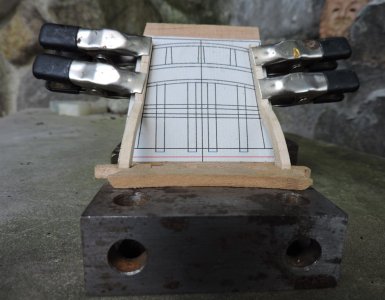
first i make a copy of the stern drawing and rubber cemented it to a piece of scrap wood. It is common for all the stern timbers to have a slant towards the center line. In this case only the end timbers slant.

next step is to cut out the end stern timbers and clamp them too the drawing making sure the notch lines up with the molding. The top of the timber is a little long and runs over the cap rail. That will be trimmed later,

with both the outer timbers clamped to the drawing they are ready to glue to the transom.

the notches cut into transom were taken off the plan so the timbers will set perfectly into the outer notches automatically setting the slant.

The foot of the timbers are quite small and i would not depend on them to set the backward slant of the stern. So what i did for the slant is to make a template from the plans for my stern plate to rest on held in place by a couple blocks.

from the side you can see the setup

Another view of the setup. I could have trimmed the bottom of the drawing and wood piece to the height of the transom. but what i did was move the block the transom sat on and let the stern fall free so the foot of the timbers sit in the transom notches.

with the outer timbers in place i will run a treenail up from the bottom of the transom and into the timber. It is a weak joint and the timbers will easily break away from the transom so a pin should help reinforce the joint.





